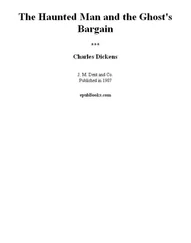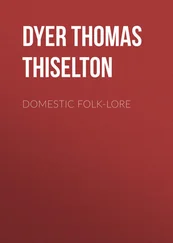Thomas Dyer - The Ghost World
Здесь есть возможность читать онлайн «Thomas Dyer - The Ghost World» — ознакомительный отрывок электронной книги совершенно бесплатно, а после прочтения отрывка купить полную версию. В некоторых случаях можно слушать аудио, скачать через торрент в формате fb2 и присутствует краткое содержание. Жанр: foreign_antique, foreign_prose, на английском языке. Описание произведения, (предисловие) а так же отзывы посетителей доступны на портале библиотеки ЛибКат.
- Название:The Ghost World
- Автор:
- Жанр:
- Год:неизвестен
- ISBN:нет данных
- Рейтинг книги:5 / 5. Голосов: 1
-
Избранное:Добавить в избранное
- Отзывы:
-
Ваша оценка:
- 100
- 1
- 2
- 3
- 4
- 5
The Ghost World: краткое содержание, описание и аннотация
Предлагаем к чтению аннотацию, описание, краткое содержание или предисловие (зависит от того, что написал сам автор книги «The Ghost World»). Если вы не нашли необходимую информацию о книге — напишите в комментариях, мы постараемся отыскать её.
The Ghost World — читать онлайн ознакомительный отрывок
Ниже представлен текст книги, разбитый по страницам. Система сохранения места последней прочитанной страницы, позволяет с удобством читать онлайн бесплатно книгу «The Ghost World», без необходимости каждый раз заново искать на чём Вы остановились. Поставьте закладку, и сможете в любой момент перейти на страницу, на которой закончили чтение.
Интервал:
Закладка:
A similar case, which occurred in the county of Durham in 1631, and is the subject of a critical historical inquiry in Surtees’s ‘History of Durham,’ may be briefly summed up. 91 91 See Book of Days , ii. p. 287.
‘One Walker, a yeoman of good estate, a widower, living at Chester-le-Street, had in his service a young female relative named Anne Walker. The results of an amour which took place between them caused Walker to send away the girl under the care of one Mark Sharp, a collier, professedly that she might be taken care of as befitted her condition, but in reality that she might no more be troublesome to her lover. Nothing was heard of her till, one night in the ensuing winter, one James Graham, coming down from the upper to the lower floor of his mill, found a woman standing there with her hair hanging about her head, in which were five bloody wounds. According to the man’s evidence, she gave an account of her fate; having been killed by Sharp on the moor in their journey, and thrown into a coal pit close by, while the instrument of her death, a pick, had been hid under a bank along with his clothes, which were stained with her blood. She demanded of Graham that he should expose her murder, which he hesitated to do, until she had twice reappeared to him, the last time with a threatening aspect.
‘The body, the pick, and the clothes having been found as Graham had described, Walter and Sharp were tried at Durham, before Judge Davenport, in August 1631. The men were found guilty, condemned, and executed.’
In ‘Ackerman’s Repository’ for November 1820, there is an account of a person being tried on the pretended evidence of a ghost. A farmer, on his return from the market at Southam, co. Warwick, was murdered. The next morning a man called upon the farmer’s wife, and related how on the previous night her husband’s ghost had appeared to him, and, after showing him several stabs on his body, had told him that he was murdered by a certain person, and his corpse thrown into a marl-pit. A search was instituted, the body found in the pit, and the wounds on the body of the deceased were exactly in the parts described by the pretended dreamer; the person who was mentioned was committed for trial on the charge of murder, and the trial came on at Warwick before Lord Chief Justice Raymond. The jury would have convicted the prisoner as rashly as the magistrate had committed him, but for the interposition of the judge, who told them he did not put any credence in the pretended ghost story, since the prisoner was a man of unblemished reputation, and no ill-feeling had ever existed between himself and the deceased. He added that he knew of no law which admitted of the evidence of a ghost, and, if any did, the ghost had not appeared. The crier was then ordered to summon the ghost, which he did three times, and the judge then acquitted the prisoner, and caused the accuser to be detained and his house searched, when such strong proofs of guilt were discovered, that the man confessed the crime, and was executed for murder at the following assizes.
CHAPTER VII
PHANTOM BIRDS
One of the forms which the soul is said occasionally to assume at death is that of a bird – a pretty belief which, under one form or another, exists all over the world. An early legend tells how, when St. Polycarp was burnt alive, there arose from his ashes a white dove which flew towards heaven; and a similar story is told of Joan of Arc. The Russian peasantry affirm that the souls of the departed haunt their old homes in the shape of birds for six weeks, and watch the grief of the bereft, after which time they fly away to the other world. In certain districts bread-crumbs are placed on a piece of white linen at a window during those six weeks, when the soul is believed to come and feed upon them in the form of a bird. It is generally into pigeons or crows that the dead are transformed. Thus, when the Deacon Theodore and his three schismatic brethren were burnt in the year 1682, writes Mr. Ralston, 92 92 Songs of the Russian People , p. 118.
‘the souls of the martyrs appeared in the air as pigeons.’ In Volhynia dead children are believed to come back in the spring to their native village under the semblance of swallows and other small birds, endeavouring, by soft twittering or song, to console their sorrowing parents. The Bulgarians say that after death the soul assumes the form of a bird; and according to an old Bohemian fancy the soul flies out of the dying in a similar shape. In the ‘Chronicles of the Beatified Anthony’ 93 93 Quoted by Gubernatis, Zoological Mythology , 1872, ii. pp. 254, 255.
we find described fetid and black pools ‘in regione Puteolorum in Apulia,’ whence the souls arise in the form of monstrous birds in the evening hours of the Sabbath, which neither eat nor let themselves be caught, but wander till in the morning an enormous lion compels them to submerge themselves in the water.
It is a German belief that the soul of one who has died on shipboard passes into a bird, and when seen at any time it is supposed to announce the death of another person. The ghost of the murdered mother comes swimming in the form of a duck, or the soul sits in the likeness of a bird on the grave. This piece of folk-lore has been introduced into many of the popular folk-tales, as in the well-known story of the juniper tree. A little boy is killed by his step-mother, who serves him up as a dish of meat to his father. The father eats in ignorance, and throws away the bones, which are gathered up by the half-sister, who puts them into a silk handkerchief and buries them under a juniper tree. But presently a bird of gay plumage perches on the tree, and whistles as it flits from branch to branch:
Min moder de mi slach’t,
Min fader de mi att,
Min swester de Marleenken,
Söcht alle mine Beeniken,
Und bindt sie in een syden Dodk,
Legst unner den Machandelboom;
Ky witt! ky witt! Ach watt en schön vogel bin ich!
– a rhyme which Goethe puts into the mouth of Gretchen in prison. 94 94 Countess Evelyn Martinengo-Cesaresco, Study of Folk-songs p. 10; Thorpe’s Northern Mythology , i. p. 289.
In Grimm’s story of ‘The White and the Black Bride,’ the mother and sister push the true bride into the stream. At the same moment a snow-white swan is discovered swimming down the stream.
Swedish folk-lore tells us that the ravens which scream by night in forest swamps and wild moors are the ghosts of murdered men whose bodies have been hidden by their undetected murderers, and not had Christian burial. In Denmark the night-raven is considered an exorcised spirit, and there is said to be a hole in its left wing caused by the stake driven into the earth. Where a spirit has been exorcised, it is only through the most frightful swamps and morasses that it ascends, first beginning under the earth with the cry of ‘Rok! rok!’ then ‘Rok op! rok op!’ and when it has thus come forth, it flies away screaming ‘Hei! hei! he! – i!’ When it has flown up it describes a cross, but one must take care, it is said, not to look up when the bird is flying overhead, for he who sees through the hole in its wing will become a night-raven himself, and the night-raven will be released. This ominous bird is ever flying towards the east, in the hope of reaching the Holy Sepulchre, for when it arrives there it will find rest. 95 95 Henderson’s Folk-lore of Northern Counties , p. 126; Thorpe’s Northern Mythology, ii. p. 211.
Then there is the romantic Breton ballad of ‘Lord Nann and the Korrigan,’ wherein it is related how —
It was a marvel to see, men say,
The night that followed the day,
The lady in earth by her lord lay,
Интервал:
Закладка:
Похожие книги на «The Ghost World»
Представляем Вашему вниманию похожие книги на «The Ghost World» списком для выбора. Мы отобрали схожую по названию и смыслу литературу в надежде предоставить читателям больше вариантов отыскать новые, интересные, ещё непрочитанные произведения.
Обсуждение, отзывы о книге «The Ghost World» и просто собственные мнения читателей. Оставьте ваши комментарии, напишите, что Вы думаете о произведении, его смысле или главных героях. Укажите что конкретно понравилось, а что нет, и почему Вы так считаете.












